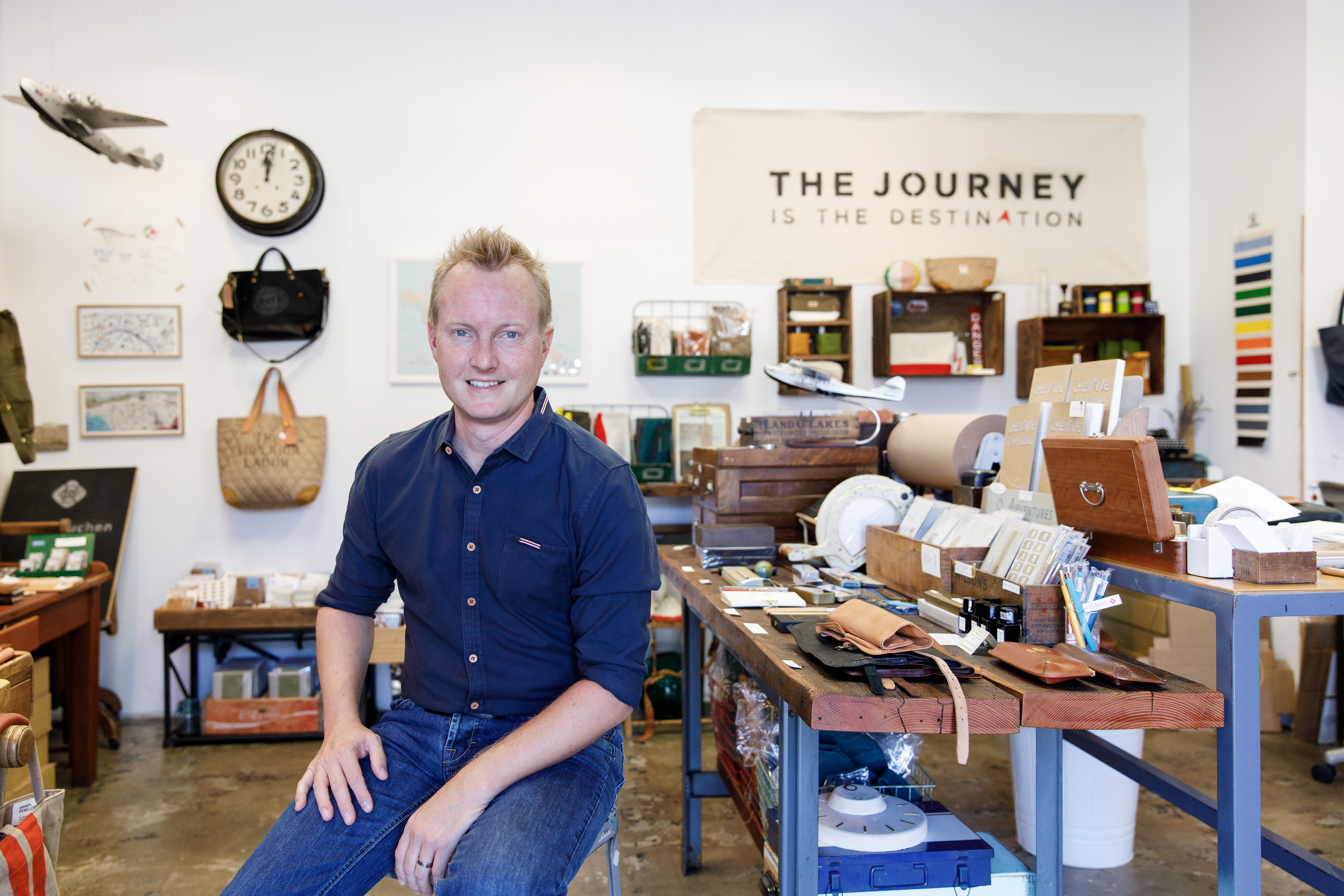August 30, 2017
10 Steps to Solve Any Problem in New Book by Respected and Feared ArtCenter College of Design Teacher Frido Beisert
New book Creative Strategies distills mechanics of creativity
Can you teach creativity? “Yes!” says Fridolin “Frido” Beisert, author of Creative Strategies, a new book that offers 10 approaches to solve everyday problems. The legendary ArtCenter College of Design teacher asserts that the creative process is a skill that can be learned and practiced just like riding a bicycle. In a breezy style with plenty of humor, Beisert explains how to eliminate the fear of failure and gain freedom and confidence when approaching any task.
Collectively, the 10 creative strategies featured in the book, published by Design Studio Press, are about using both the right and left hemispheres of the brain simultaneously and in harmony, responding to challenges with a flexible mind. “I see evidence of this regularly in my classroom where students with an open-minded approach produce far greater creative leaps in their work,” said Beisert, who is an alumnus of ArtCenter College of Design with 18 years of experience working as a professional designer while also teaching on the Pasadena campus.
The author uncovers key steps in the creative process such as: identifying the blind spot, exploring the value of “Crit (critique) Culture” and expanding on how best to refuel on inspiration and reality hacking. In the final chapter, Beisert provides 10 ways to live more creatively.
The book is an excellent primer to understand ArtCenter College of Design’s pedagogy, or “secret sauce.” The college has produced some of the world’s most respected designers of automobiles, technology, footwear and furniture.
“Frido is by far the greatest instructor of my life,” said Andrew Kim, Tesla’s lead designer who wrote the book's foreward. “But he’s the scariest man I’ve ever met.”
“If it weren’t for his class, I would have never approached design the way I do today,” wrote Kim about Beisert. “I discovered a newfound clarity and began to see paths to a solution that I was previously blind to.”
Quirky, eccentric and obsessed with discovering the core of any problem or challenge, Beisert, has taught thousands of young designers at ArtCenter who have gone on to lead innovation for many of the world’s most trailblazing companies such as adidas, Airbnb, Facebook, Google, Nike and Under Armour.
During his career, Beisert recognized that creativity was indeed a skill he learned, but he didn’t exactly know how he had acquired this ability. He set out to discover the secrets of creativity pedagogy by first analyzing the evolution of his own design process.
While a graduate student at ArtCenter’s top ranked Industrial Design department, Beisert spent two years researching prototype methods on how to teach creativity.
“The most important thing I learned is that I could achieve anything I want in life as long as I set my mind to it,” said Beisert about a widely shared revelation among the more than 20,000 ArtCenter alumni who become stellar problem solvers in their lives and careers.
ArtCenter students are black belts in the art of design thinking—an area of study that merges business and design and uses close, almost anthropological, observation of people to gain insight into problems that may not be articulated yet.
The book is illustrated by ArtCenter alumna Jessie Kawata and the cover is designed by fellow alumnus Tomo Ogino.
About the author: Fridolin “Frido” Beisert is the creative director of Baum-Kuchen.net and also a director in the Product Design department at ArtCenter College of Design where he teaches creative problem solving, design innovation and dynamic sketching. Prior to this role, he worked in Tokyo developing futuristic video games, formed a global concept design consultancy in Los Angeles, played as an international underground DJ, wrote a book on learning design using 3D software and studied traditional arts and crafts in Japan. More information about him can be found at www.beisert.com
About the illustrator: Jessie Kawata is a designer and artist who loves to explore the world of science and technology. Her background in product design and illustration led her to become one of the first in-house creative strategists at NASA’s Jet Propulsion Laboratory in Pasadena. She has played a key role in introducing design thinking and creative methodology into the design of early spacecraft mission concepts. When Jessie is not staring into space, she is back on Earth as a part-time instructor at ArtCenter College of Design’s curriculum for teens, sailing tall ships, and treasure hunting at flea markets and record shops.
About ArtCenter College of Design: Founded in 1930 and located in Pasadena, California, ArtCenter College of Design is a global leader in art and design education. ArtCenter offers 11 undergraduate and seven graduate degrees in a wide variety of industrial design disciplines as well as visual and applied arts. In addition to its top-ranked academic programs, the College also serves members of the Greater Los Angeles region through a highly regarded series of year-round educational programs for all ages and levels of experience. Renowned for both its ties to industry and social impact initiatives, ArtCenter is the first design school to receive the United Nations’ Non-Governmental Organization (NGO) status. Throughout the College’s long and storied history, ArtCenter alumni have had a profound impact on popular culture, the way we live and important issues in our society.
Contact:
Teri Bond
Media Relations Director
teri.bond@artcenter.edu
O 626 396-2385
M 310 738-2077




